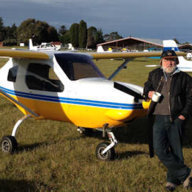I have now. Rule Part 175 is something different. My error.
(1)(h) the latest editions of the aeronautical maps, charts and other aeronautical information and instructions, published in AIP or by a person approved in writing, .... .
(3) An operator must keep a completed flight preparation form for a period of 6 months.
(4) An offence against subregulation (1), (2) or (3) is an offence of strict liability.
Note For strict liability, see section 6.1 of the Criminal Code.
I must look into this "flight preparation form" thing - we no doubt have the same rule in NZ. Then I suppose I should toddle down to the police, fess up and do my time like a man for repeated criminal transgression of sub-reg 3. All those Sunday afternoon local flights in my Jab and never a flight preparation form to be seen .... how unsafe is that!
I guess 1(h) covers AVMET. The pemet page is just a web page translation from gibberish to English. If I were more of a linguist I could have done one in Spanish or French. I am not a weather data provider - that requires certification and approval by a person in writing. As an aside, if CASA/AirServices are anything like CAA/Airways, they wouldn't know where to start in certifying or approving plain language AVMET. There's no CAR or ICAO standard or anything else for it so they would have to make it all up from scratch. Think 5 years if they decided tomorrow to do it.
Alternatively they could just do it - like in Canada where the TAFs/METARs from NavCanada (the AirServices equivalent) come as codes and optional English.
Fair enough. I didn't know that. TSO C129 defines the gear, but who regulates/licences the maps?
The only GPS's I have ever seen are the non-TSO'd units (Garmin x9x) with the Jeppesen-crafted skeletal moving maps and airspace pictures. You find them in lots of recreational aircraft. Being non-TSO'd they are never used for any function related to navigation except as a backup in case of chart failure [see CAR233 subregulation 1(h)].
:-)


